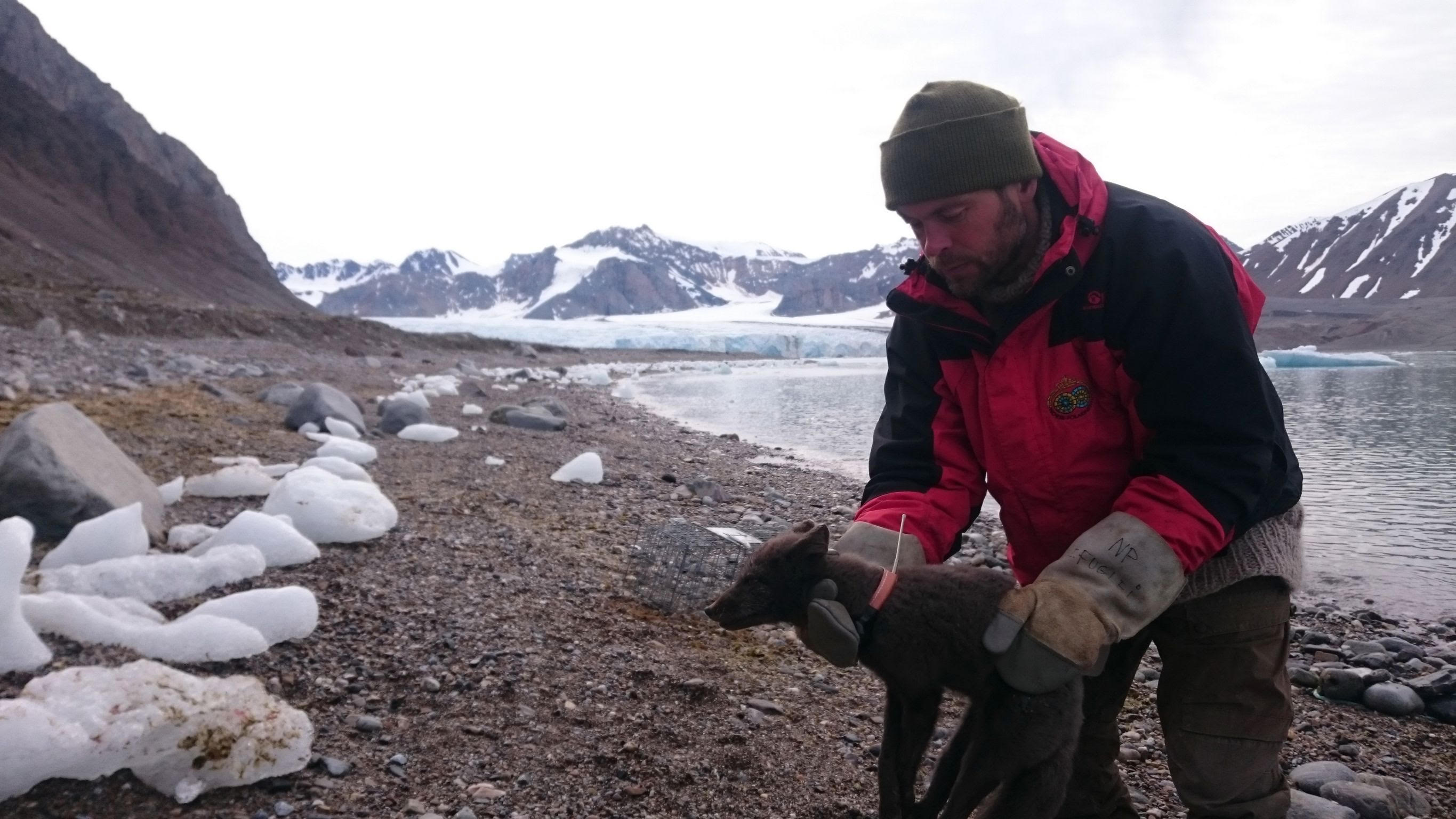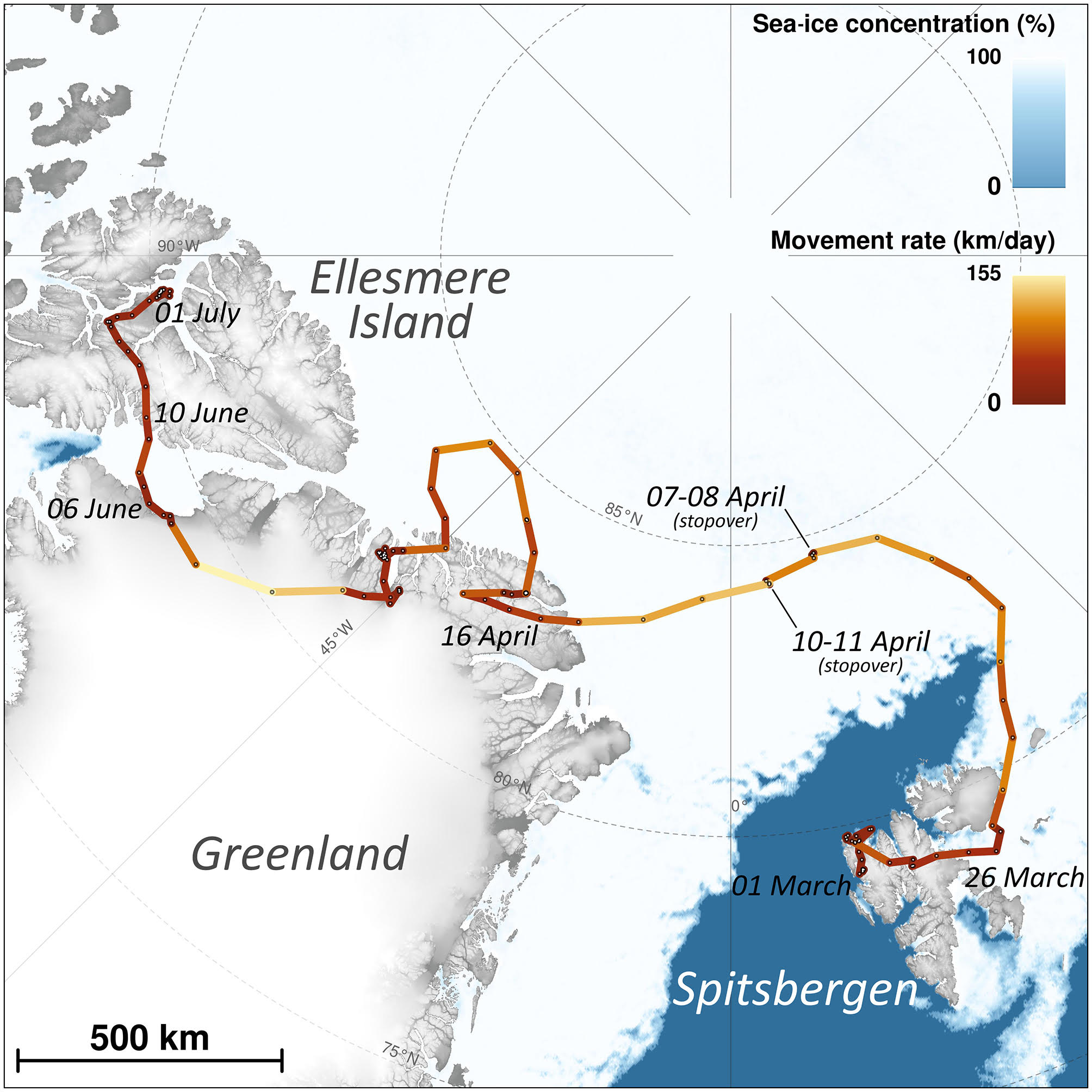Here's How Scientists Tracked That Arctic Fox's Epic Journey

It's a trek of epic proportions: 2,700 miles (4,350 kilometers) across sea ice in the Arctic in just 76 days, likely fueled by hunger.
The researchers who studied the fox's journey report that it's the fastest movement rate scientists have measured for the species before: an average of 29 miles (47 km) per day. And it's a satellite system that made it possible for scientists to track that journey.
The Argos Data Collection System is a long-standing international program that incorporates sensors and transmitters on more than 21,000 satellites that orbit the Earth from pole to pole, according to the National Oceanic and Atmospheric Administration, which is the U.S. representative in the partnership.
Related: Earth Day 2019: These Amazing NASA Images Show Earth from Above
Argos technology first launched in the late 1970s, and because of the sheer number of instruments in orbit and the polar orbit of the satellites involved, it offers worldwide coverage. And in the case of the research project focused on arctic foxes, the collars connected to Argos are smaller than those relying on GPS signals.
The fox was collared in July 2017, but it wasn't until early March 2018 that she set off on her long journey from Svalbard northeast across Spitsbergen island onto sea ice, changing course twice when she ran into open ocean. Eventually, she crossed the ice to northern Greenland and then to Ellesmere Island in northernmost Canada.

The data intrigued wildlife scientists because it was valuable evidence for the species travelling — and quickly — over vast swaths of ice, which can help keep small populations scattered on islands connected. The study was published in the journal Polar Research.
Get the Space.com Newsletter
Breaking space news, the latest updates on rocket launches, skywatching events and more!
Scientists lost track of this particular fox in early February, when her collar stopped transmitting. But Argos experts hope that the network will see plenty more use in the coming years. Several agencies, including the French and Indian space agencies and NOAA, are planning to launch new Argos instruments by 2024, according to a statement from NOAA.
- Stunning Ice-Covered Great Lakes Seen from Space (Photo)
- Weird Rectangular Iceberg in Antarctica Isn't Alone, NASA Photos Show
- In Photos: Antarctica's Larsen C Ice Shelf Through Time
Email Meghan Bartels at mbartels@space.com or follow her @meghanbartels. Follow us on Twitter @Spacedotcom and on Facebook.
Join our Space Forums to keep talking space on the latest missions, night sky and more! And if you have a news tip, correction or comment, let us know at: community@space.com.

Meghan is a senior writer at Space.com and has more than five years' experience as a science journalist based in New York City. She joined Space.com in July 2018, with previous writing published in outlets including Newsweek and Audubon. Meghan earned an MA in science journalism from New York University and a BA in classics from Georgetown University, and in her free time she enjoys reading and visiting museums. Follow her on Twitter at @meghanbartels.









